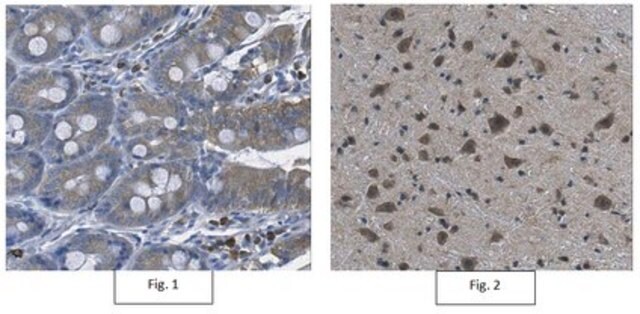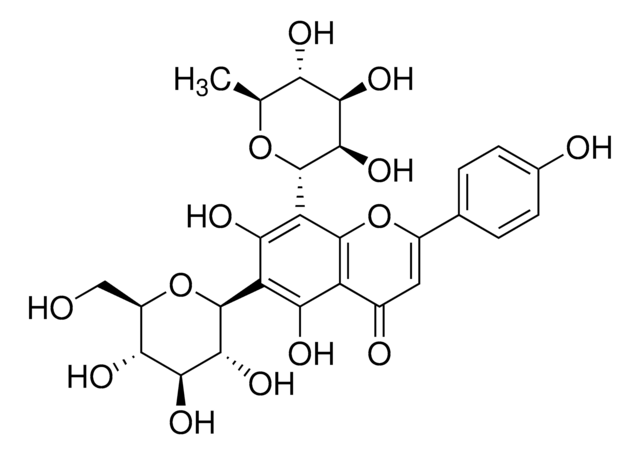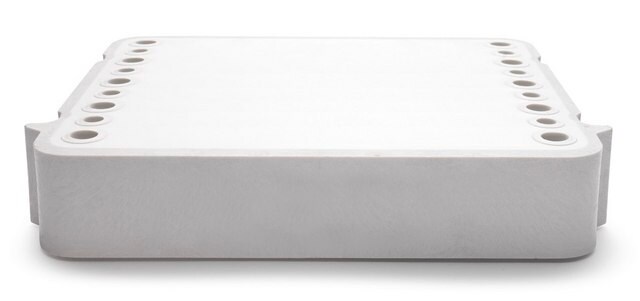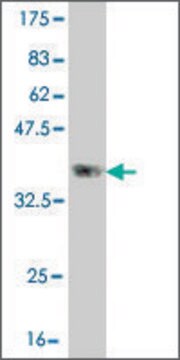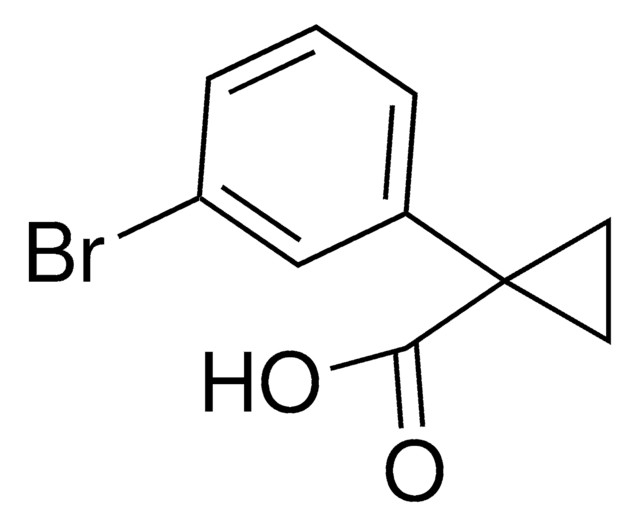108340
3-Hydroxy-2-quinoxalinecarboxylic acid
97%
Autenticatiper visualizzare i prezzi riservati alla tua organizzazione & contrattuali
About This Item
Formula empirica (notazione di Hill):
C9H6N2O3
Numero CAS:
Peso molecolare:
190.16
Numero CE:
Numero MDL:
Codice UNSPSC:
12352100
ID PubChem:
NACRES:
NA.22
Prodotti consigliati
Livello qualitativo
Saggio
97%
Punto di fusione
267-268 °C (lit.)
Gruppo funzionale
carboxylic acid
Stringa SMILE
OC(=O)c1nc2ccccc2nc1O
InChI
1S/C9H6N2O3/c12-8-7(9(13)14)10-5-3-1-2-4-6(5)11-8/h1-4H,(H,11,12)(H,13,14)
NMOWGWOAPRKWIR-UHFFFAOYSA-N
Categorie correlate
Applicazioni
3-Hydroxy-2-quinoxalinecarboxylic acid was used to study the sorption of ionizable organic compounds to an estuarine sediment. It was used in the preparation of Zinc(II)-quinoxaline complexes which was characterized by X-ray crystallography and fluorescence spectroscopy.
Azioni biochim/fisiol
3-Hydroxy-2-quinoxalinecarboxylic acid is an antagonist of excitatory amino acids and possesses anticonvulsant properties. It inhibits the 22Na+ efflux produced in 22Na+-preloaded brain slices by N-methyl-D-aspartate and kainate.
Avvertenze
Warning
Indicazioni di pericolo
Consigli di prudenza
Classi di pericolo
Eye Irrit. 2 - Skin Irrit. 2 - STOT SE 3
Organi bersaglio
Respiratory system
Codice della classe di stoccaggio
11 - Combustible Solids
Classe di pericolosità dell'acqua (WGK)
WGK 3
Punto d’infiammabilità (°F)
Not applicable
Punto d’infiammabilità (°C)
Not applicable
Dispositivi di protezione individuale
dust mask type N95 (US), Eyeshields, Gloves
Scegli una delle versioni più recenti:
Possiedi già questo prodotto?
I documenti relativi ai prodotti acquistati recentemente sono disponibili nell’Archivio dei documenti.
U Erez et al.
European journal of pharmacology, 110(1), 31-39 (1985-03-26)
Various aromatic acids have been investigated as putative ligands of excitatory amino acid receptors. 3-Hydroxy-2-quinoxalinecarboxylic acid (HQC), at 1 mM, was found to antagonize the 22Na+ efflux produced in 22Na+-preloaded brain slices by N-methyl-D-aspartate and kainate. The response to glutamate
Ken-Ichi Sakai et al.
Dalton transactions (Cambridge, England : 2003), 39(8), 1989-1995 (2010-02-12)
Zinc(ii)-quinoxaline complexes, [Zn(hqxc)(2)(py)(2)] and [Zn(hqxc)(2)(DMSO)(2)] (hqxc = 3-hydroxy-2-quinoxalinecarboxylate, py = pyridine, DMSO = dimethyl sulfoxide), were prepared and characterized by X-ray crystallography and fluorescence spectroscopy. In both complexes, the zinc ion is six-coordinated by two equatorial bidentate hqxc ligands with
Serdar Badoğlu et al.
Spectrochimica acta. Part A, Molecular and biomolecular spectroscopy, 101, 14-21 (2012-10-27)
The mid-IR and Raman spectra of 3-hydroxy-2-quinoxalinecarboxylic acid (3HQC) were recorded. These spectra were interpreted with the help of B3LYP/6-311++G(d,p) calculations and potential energy distribution (PED) analysis. As a result of the calculations, seven tautomers were determined among many stable
Cadmium (II) and calcium (II) complexes with N, O-bidentate ligands derived from pyrazinecarboxylic acid.
Barszcz B, et al.
Journal of Thermal Analysis and Calorimetry, 108(3), 971-978 (2012)
H Frenk et al.
Brain research, 373(1-2), 222-226 (1986-05-14)
Three compounds reportedly blocking the N-methyl-D-aspartate (NMDA) receptor, namely 2-amino-5-phosphonovalerate, gamma-D-glutamylglycine and 3-hydroxy-2-quinoxalinecarboxylic acid, were injected subdurally onto the cortex of freely moving rats. All 3 compounds effectively suppressed behavioral and electrographic seizure activity induced by strychnine, morphine and picrotoxin
Il team dei nostri ricercatori vanta grande esperienza in tutte le aree della ricerca quali Life Science, scienza dei materiali, sintesi chimica, cromatografia, discipline analitiche, ecc..
Contatta l'Assistenza Tecnica.
